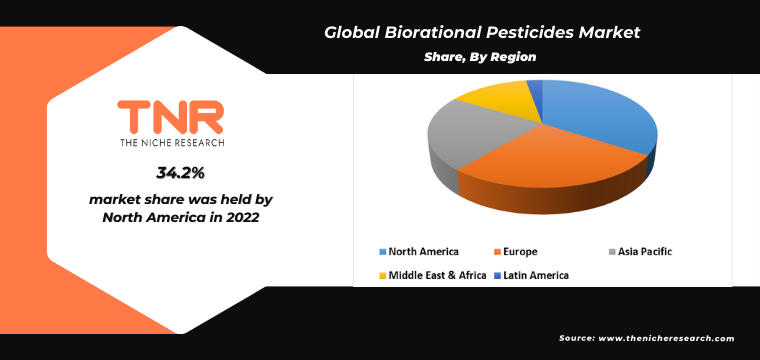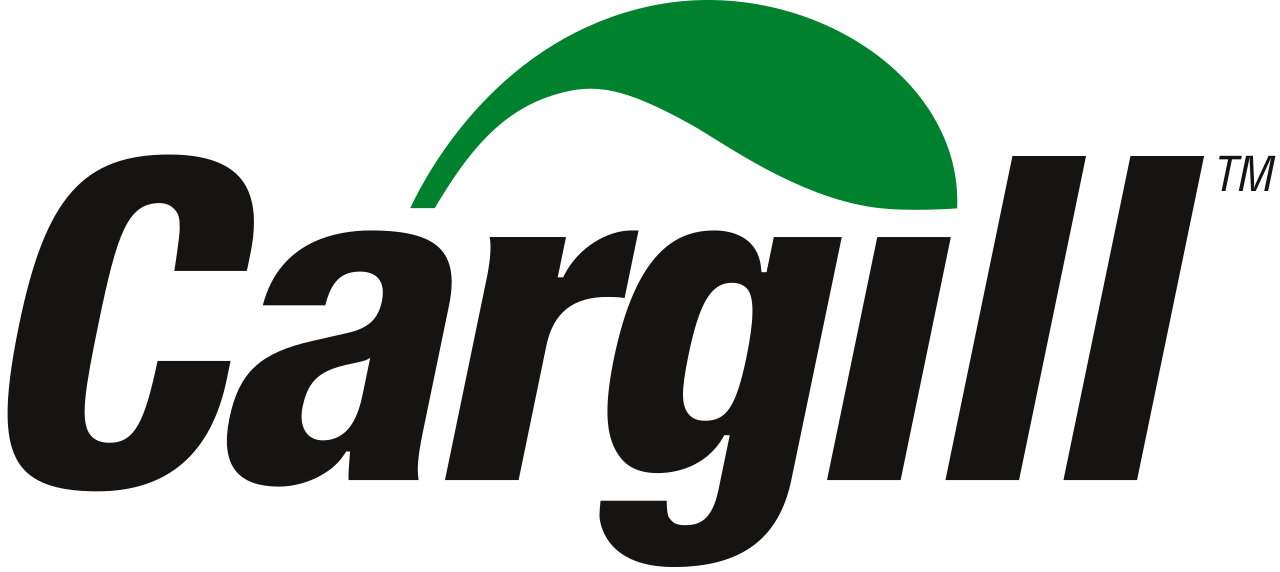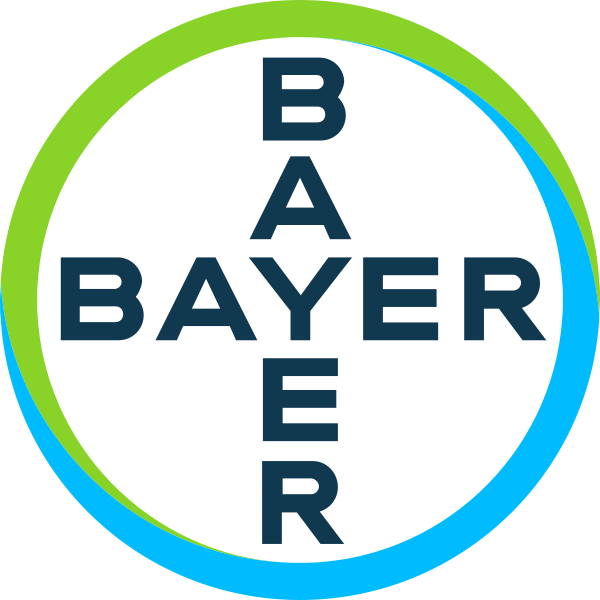Global Biorational Pesticides Market Valued at USD 5.44 Bn in 2022: states TNR
- Industry: Agriculture
- Report ID: TNR-110-953
- Number of Pages: 420
- Table/Charts : Yes
- November, 2023
- Base Year : 2024
- No. of Companies : 6+
- No. of Countries : 29
- Views : 10211
- Covid Impact Covered: Yes
- War Impact Covered: Yes
- Formats : PDF, Excel, PPT
Global Biorational Pesticides Market Insights, Growth, Share, Size: By Type, By Mode of Application, By Crop Type, By Region & Segmental Forecast, 2023-2031, Comparative Analysis and Trends
Biorational pesticides are an important component of modern pest management strategies, offering a balance between effective pest control and reduced environmental and health risks. Their adoption is expected to continue to grow as agriculture and pest control practices become more focused on sustainability and reduced chemical use.
Biorational pesticides, also known as biopesticides or biological pesticides, are a category of pest management products derived from natural materials or living organisms. They are used to control pests in agriculture, forestry, and public health while minimizing negative environmental and health impacts.
Global Biorational Pesticides Market Revenue & Volume & Forecast, (US$ Million & Million Units), 2015 – 2031

Global Biorational Pesticides Market Growth Drivers
Due to their chemical composition, fast breakdown, or the little amounts necessary to achieve control, biorational pesticides provide little to no damage to the environment. The toxicity and possible ecological effect of biorational insecticides differ. In general, biorationals have a small target range and a highly precise method of action. They are sluggish acting, have short treatment durations, and suppress rather than remove insect populations. Furthermore, they have less field persistence and a shorter shelf life than typical synthetic pesticides, as well as no residual issues.
Furthermore the expansion of organic agriculture, which relies on biorational pesticides as a primary pest control method, has boosted the demand for these products. These growth drivers collectively contribute to the expanding biorational pesticides market, which offer effective pest control solutions while addressing the need for sustainability, reduced environmental impact, and consumer safety.
Report Coverage and Deliverables:

In the last few years, biorational pesticides for soil treatment is gaining huge popularity as its primary focus on enhancing soil health and managing soil-borne pests and diseases while minimizing environmental impact. These products can improve crop yields and overall soil quality in a sustainable and eco-friendly manner. These biorational pesticides are often used in integrated pest management (IPM) and organic farming systems to maintain soil health, reduce reliance on synthetic chemicals, and promote sustainable agriculture.

Biorational pesticides are used in various crop types to manage pests, diseases, and weeds in an environmentally friendly and sustainable manner. The rise in demand for biorational pesticides for crops reflects a growing trend in agriculture towards more sustainable and environmentally friendly pest management practices. Biorational pesticides are a category of pest control products that are designed to be less harmful to non-target organisms, including humans, and have lower environmental impacts compared to traditional chemical pesticides.
Biorational pesticides have gained significant traction in North America due to increasing awareness of environmental and health concerns associated with traditional chemical pesticides. Biorational pesticides are an integral part of integrated pest management (IPM) programs in North America. IPM emphasizes a holistic approach to pest control, combining various strategies, including biological control, cultural practices, and biorational pesticides, to minimize the use of chemical pesticides.
Competitive Landscape
The global biorational pesticides market is competitive and evolving rapidly, with established global players and smaller, innovative companies working to meet the increasing demand for sustainable and environmentally friendly pest management solutions. The market’s growth prospects are tied to factors such as regulatory support, consumer preferences, and the ongoing development of effective biorational products.
The study also provides in-depth research on the market’s main competition, as well as information on the competition they face. Each company’s global presence, competitors, service offerings, product releases, and recent partnerships are all analysed in the research.
The following are some of the prominent players in the global biorational pesticides market:
- BASF SE
- Bayer AG
- Certis USA L.L.C.
- Koppert
- Pro Farm Group Inc
- Syngenta
- Valent Biosciences (Sumitomo Chemical Co., Ltd.)
- Other Market Participants
Global Biorational Pesticides Market Report Coverage
| Report Specifications | Details |
| Market Revenue in 2022 | US$ 5.44 Billion |
| Market Size Forecast by 2031 | US$ 16.95 Billion |
| Growth Rate (CAGR) | 11.8% |
| Historic Data | 2015 – 2021 |
| Base Year for Estimation | 2022 |
| Forecast Period | 2023 – 2031 |
| Report Inclusions | Market Size & Estimates, Market Dynamics, Competitive Scenario, Trends, Growth Factors, Market Determinants, Key Investment Segmentation, Product/Service/Solutions Benchmarking |
| Segments Covered | By Type, By Mode of Application, By Crop Type |
| Regions Covered | North America, Europe, Asia Pacific, Middle East & Africa, Latin America |
| Countries Covered | U.S., Canada, Mexico, Rest of North America, France, The UK, Spain, Germany, Italy, Nordic Countries (Denmark, Finland, Iceland, Sweden, Norway), Benelux Union (Belgium, The Netherlands, Luxembourg), Rest of Europe, China, Japan, India, New Zealand, Australia, South Korea, Southeast Asia (Indonesia, Thailand, Malaysia, Singapore, Rest of Southeast Asia), Rest of Asia Pacific, Saudi Arabia, UAE, Egypt, Kuwait, South Africa, Rest of Middle East & Africa, Brazil, Argentina, Rest of Latin America |
| Key Players | BASF SE, Bayer AG, Certis USA L.L.C., Koppert, Pro Farm Group Inc, Syngenta, Valent Biosciences (Sumitomo Chemical Co., Ltd.), Other Industry Participants |
| Customization Scope | Customization allows for the inclusion/modification of content pertaining to geographical regions, countries, and specific market segments. |
| Pricing & Procurement Options | Explore purchase options tailored to your specific research requirements |
| Contact Details | Consult With Our Expert
Japan (Toll-Free): – +81 663-386-8111 South Korea (Toll-Free): – +82-808- 703-126 Saudi Arabia (Toll-Free): – +966 800 850 1643 United States: +1 302-232-5106 United Kingdom: +447537105080 E-mail: askanexpert@thenicheresearch.com
|
Global Biorational Pesticides Market
By Type
- Microbial
- Bacteria
- Fungus
- Viruses
- Protozoa
- Others
- Botanicals
- Biochemical
By Mode of Application
- Foliar Spray
- Soil Treatment
- Trunk Injection
By Crop Type
- Cereals and Grains
- Oilseeds and Pulses
- Fruits and Vegetables
- Others
By Region
- North America (U.S., Canada, Mexico, Rest of North America)
- Europe (France, The UK, Spain, Germany, Italy, Nordic Countries (Denmark, Finland, Iceland, Sweden, Norway), Benelux Union (Belgium, The Netherlands, Luxembourg), Rest of Europe)
- Asia Pacific (China, Japan, India, New Zealand, Australia, South Korea, Southeast Asia (Indonesia, Thailand, Malaysia, Singapore, Rest of Southeast Asia), Rest of Asia Pacific)
- Middle East & Africa (Saudi Arabia, UAE, Egypt, Kuwait, South Africa, Rest of Middle East & Africa)
- Latin America (Brazil, Argentina, Rest of Latin America)
Table of Contents
Note: This ToC is tentative and can be changed according to the research study conducted during the course of report completion.
**Exclusive for Multi-User and Enterprise User.
Global Biorational Pesticides Market Segmentation
Global Biorational Pesticides Market Type Outlook (Revenue & Volume, USD Million & Million Units, 2015 – 2031)
Global Biorational Pesticides Market Mode Of Application Outlook (Revenue & Volume, USD Million & Million Units, 2015 – 2031)
Global Biorational Pesticides Market Crop Type Outlook (Revenue & Volume, USD Million & Million Units, 2015 – 2031)
Global Biorational Pesticides Market Regional Outlook (Revenue & Volume, USD Million & Million Units, 2015 – 2031)
**Note: The report covers cross-segmentation analysis by region further into countries
The Niche Research approach encompasses both primary and secondary research methods to provide comprehensive insights. While primary research is the cornerstone of our studies, we also incorporate secondary research sources such as company annual reports, premium industry databases, press releases, industry journals, and white papers.
Within our primary research, we actively engage with various industry stakeholders, conducting paid interviews and surveys. Our meticulous analysis extends to every market participant in major countries, allowing us to thoroughly examine their portfolios, calculate market shares, and segment revenues.
Our data collection primarily focuses on individual countries within our research scope, enabling us to estimate regional market sizes. Typically, we employ a bottom-up approach, meticulously tracking trends in different countries. We analyze growth drivers, constraints, technological innovations, and opportunities for each country, ultimately arriving at regional figures.Our process begins by examining the growth prospects of each country. Building upon these insights, we project growth and trends for the entire region. Finally, we utilize our proprietary model to refine estimations and forecasts.
Our data validation standards are integral to ensuring the reliability and accuracy of our research findings. Here’s a breakdown of our data validation processes and the stakeholders we engage with during our primary research:
- Supply Side Analysis: We initiate a supply side analysis by directly contacting market participants, through telephonic interviews and questionnaires containing both open-ended and close-ended questions. We gather information on their portfolios, segment revenues, developments, and growth strategies.
- Demand Side Analysis: To gain insights into adoption trends and consumer preferences, we reach out to target customers and users (non-vendors). This information forms a vital part of the qualitative analysis section of our reports, covering market dynamics, adoption trends, consumer behavior, spending patterns, and other related aspects.
- Consultant Insights: We tap into the expertise of our partner consultants from around the world to obtain their unique viewpoints and perspectives. Their insights contribute to a well-rounded understanding of the markets under investigation.
- In-House Validation: To ensure data accuracy and reliability, we conduct cross-validation of data points and information through our in-house team of consultants and utilize advanced data modeling tools for thorough verification.
The forecasts we provide are based on a comprehensive assessment of various factors, including:
- Market Trends and Past Performance (Last Five Years): We accurately analyze market trends and performance data from preceding five years to identify historical patterns and understand the market’s evolution.
- Historical Performance and Growth of Market Participants: We assess the historical performance and growth trajectories of key market participants. This analysis provides insights into the competitive landscape and individual company strategies.
- Market Determinants Impact Analysis (Next Eight Years): We conduct a rigorous analysis of the factors that are projected to influence the market over the next eight years. This includes assessing both internal and external determinants that can shape market dynamics.
- Drivers and Challenges for the Forecast Period:Identify the factors expected to drive market growth during the forecast period, as well as the challenges that the industry may face. This analysis aids in deriving an accurate growth rate projection.
- New Acquisitions, Collaborations, or Partnerships: We keep a close watch on any new acquisitions, collaborations, or partnerships within the industry. These developments can have a significant impact on market dynamics and competitiveness.
- Macro and Micro Factors Analysis:A thorough examination of both macro-level factors (e.g., economic trends, regulatory changes) and micro-level factors (e.g., technological advancements, consumer preferences) that may influence the market during the forecast period.
- End-User Sentiment Analysis: To understand the market from the end-user perspective, we conduct sentiment analysis. This involves assessing the sentiment, preferences, and feedback of the end-users, which can provide valuable insights into market trends.
- Perspective of Primary Participants: Insights gathered directly from primary research participants play a crucial role in shaping our forecasts. Their perspectives and experiences provide valuable qualitative data.
- Year-on-Year Growth Trend: We utilize a year-on-year growth trend based on historical market growth and expected future trends. This helps in formulating our growth projections, aligning them with the market’s historical performance.
Research process adopted by TNR involves multiple stages, including data collection, validation, quality checks, and presentation. It’s crucial that the data and information we provide add value to your existing market understanding and expertise. We have also established partnerships with business consulting, research, and survey organizations across regions and globally to collaborate on regional analysis and data validation, ensuring the highest level of accuracy and reliability in our reports.










